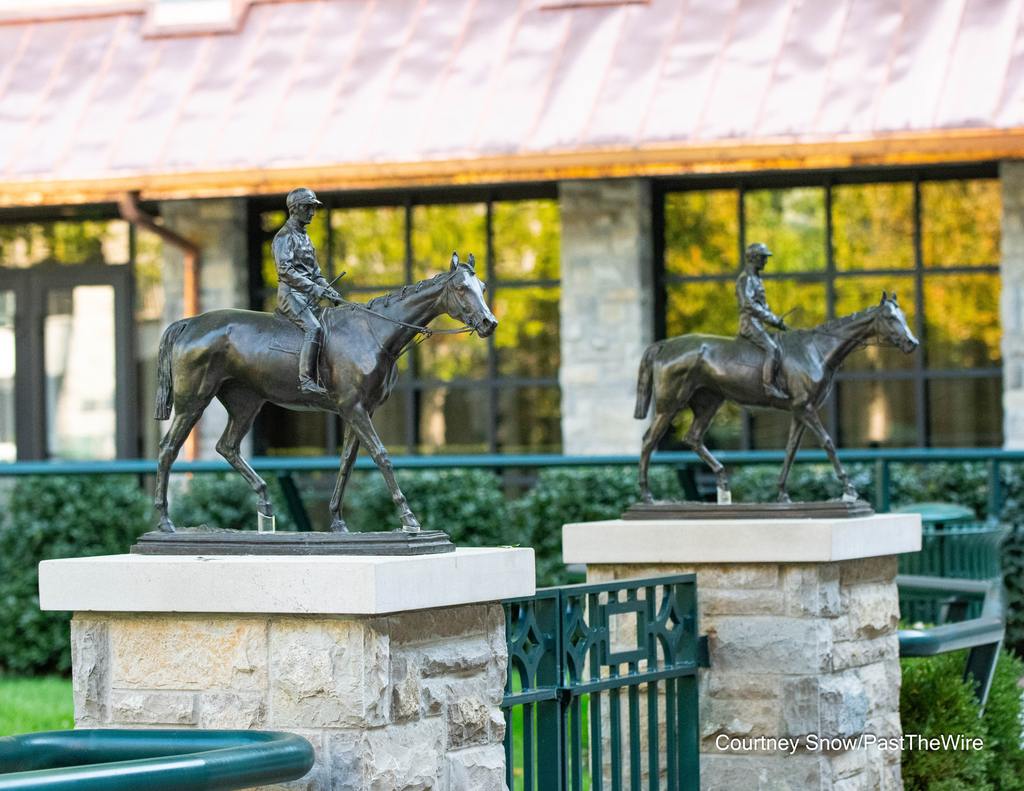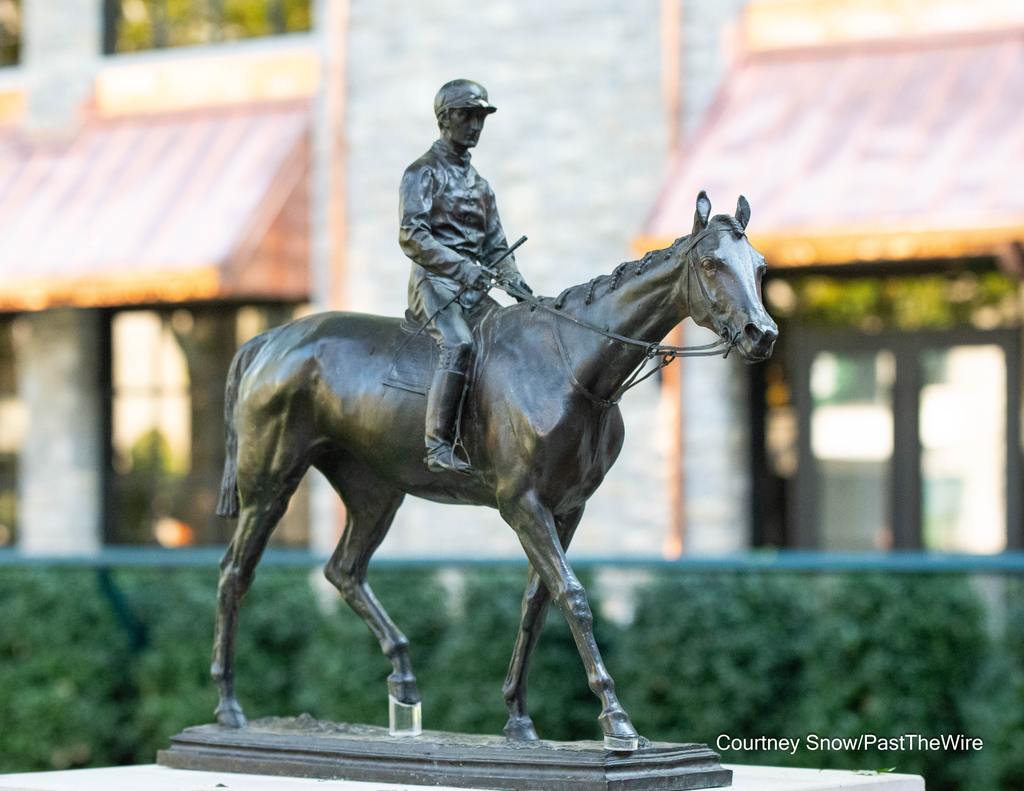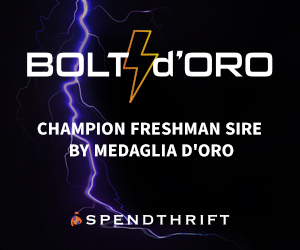
The new bronze statues. (Courtney Snow/Past The Wire)
About The Bronze Statues in the Stakes Winner’s Circle
Keeneland Release
LEXINGTON, Ky.—Debuting today — opening day of Keeneland’s 17-day Fall Meet — is the Stakes Winner’s Circle located in the former Walking Ring. After each stakes, a la Royal Ascot in England, the winning horse and connections will walk back through the tunnel to the Stakes Winner’s Circle and pose for photographs while fans can share in the thrill of victory. This gathering used to take place far from the crowd on the infield turf course.
Once the horse exits the Stakes Winner’s Circle, the connections and trophy presenter will gather for the trophy presentation before exiting through the stone gate and heading to the Directors Room to continue their celebrations.
Gracing the stone gates are two bronze statues that no doubt will delight race fans and even be familiar: “Horse and Jockey” by Isidore Bonheur.
Bonheur, a French artist often overshadowed by the strong personality and commercial success of his sister Rosa, was a prominent Animalier sculptor and painter, or artist who specialized in the representation of animals. Bonheur was part of the realism movement during the second half of the 19th century.
These bronzes at the Stakes Winner’s Circle likely were later associated with Kincsem, the famous Hungarian mare who won 54 races across Europe in the 19th century, but there’s no evidence that Bonheur created the model from Kincsem or the English jockey Elijah Madden.
According to Keeneland Library, Bonheur does not appear to have made specific portraits of horses. Instead, his work may have been sold by contemporary galleries or later dealers with the names of well-known individual horses and jockeys as a marketing strategy. Hence the sculpture often attributed as Kincsem appears occasionally as other horses in auctions and galleries today.
The bronzes are posthumous castings and are not from the “Peyrol” foundry of Bonheur’s brother-in-law, Hippolyte Peyrol, to which most of his original bronzes are closely associated.
The bronzes once stood at Keeneland on limestone piers inside the East entrance at the entry to the Paddock.



